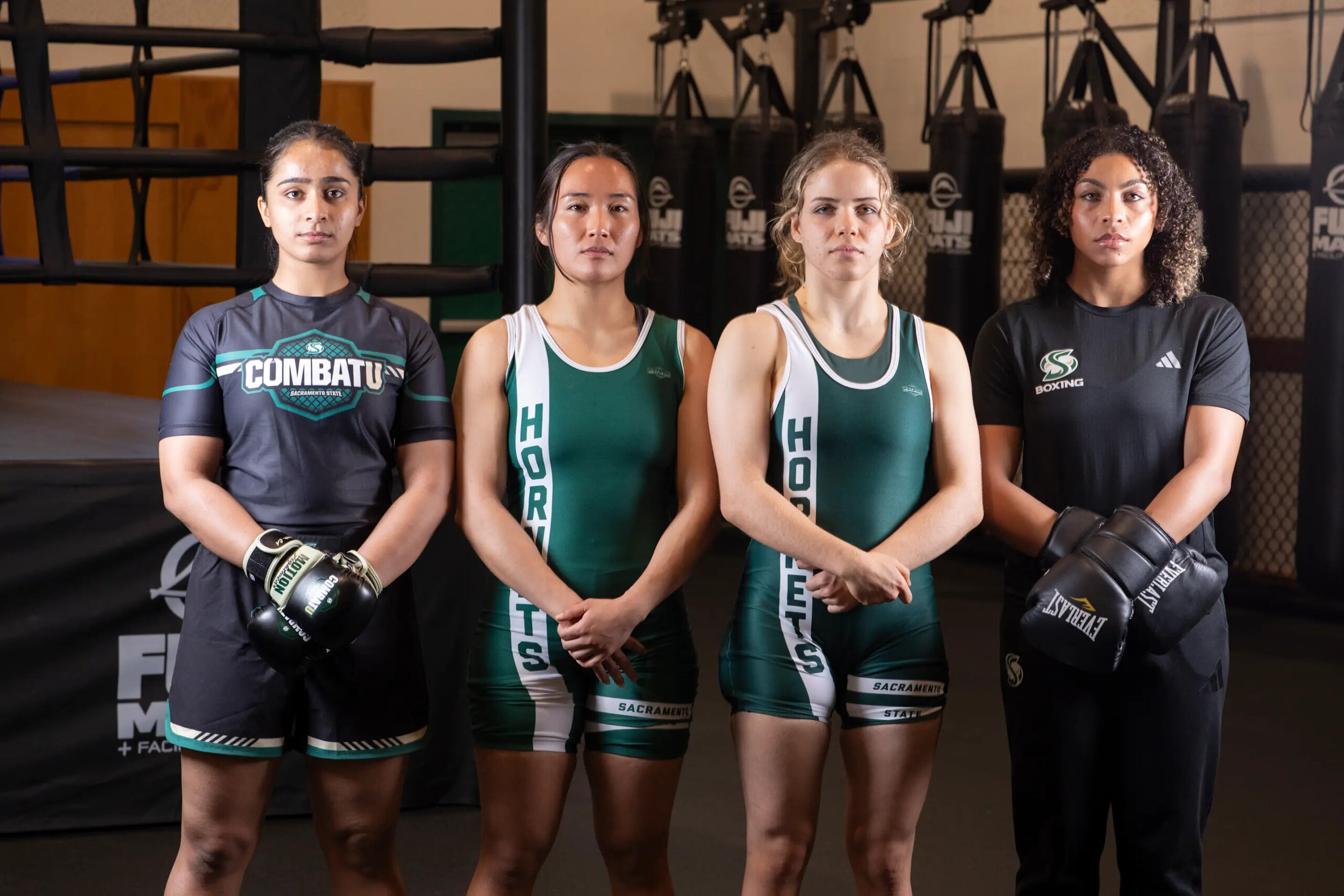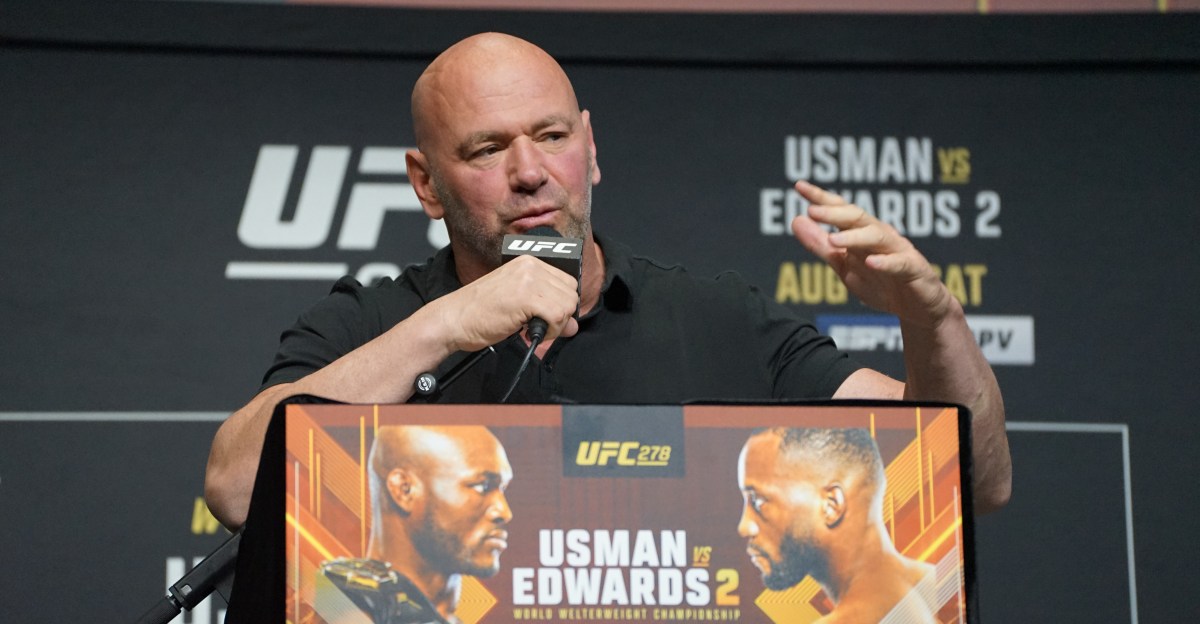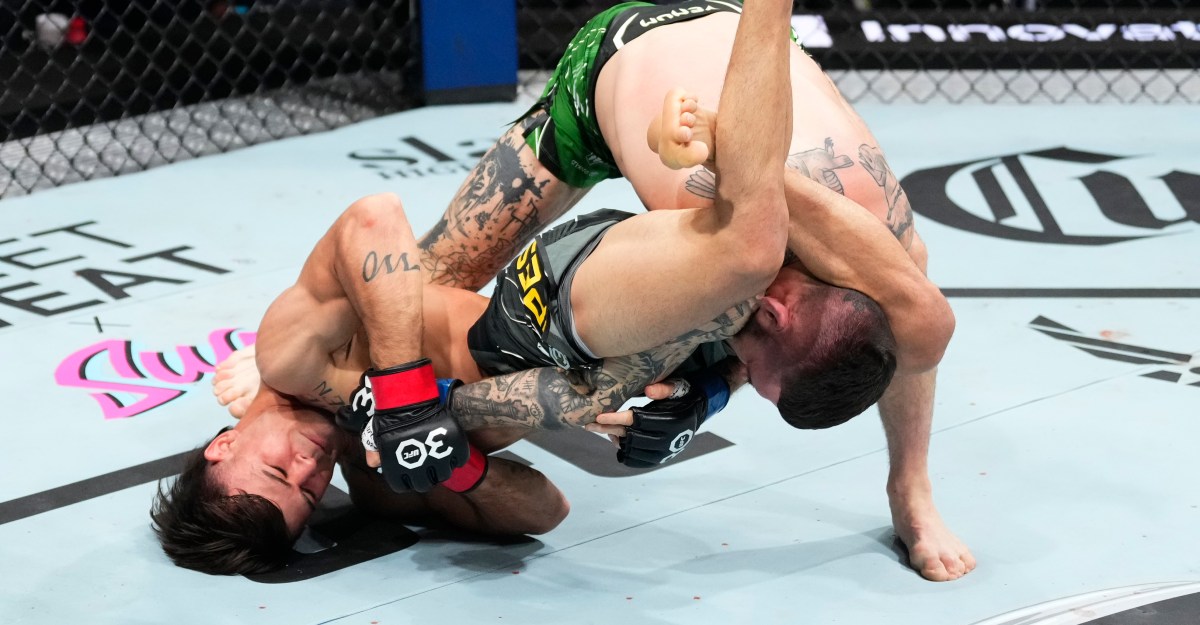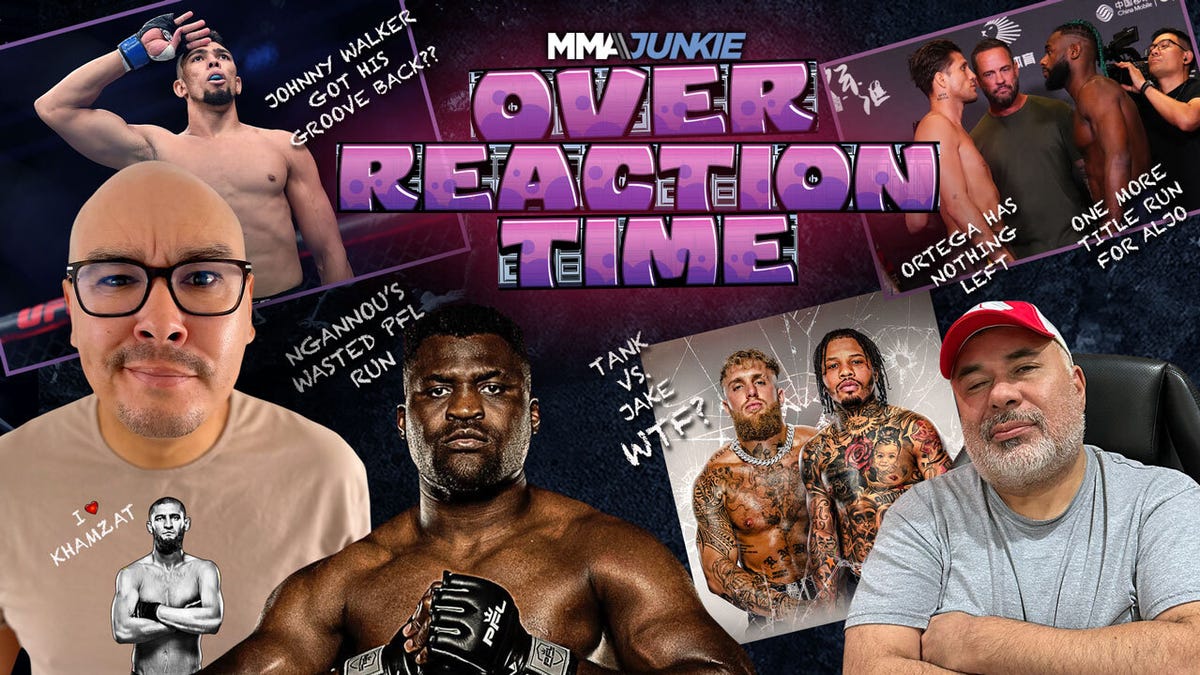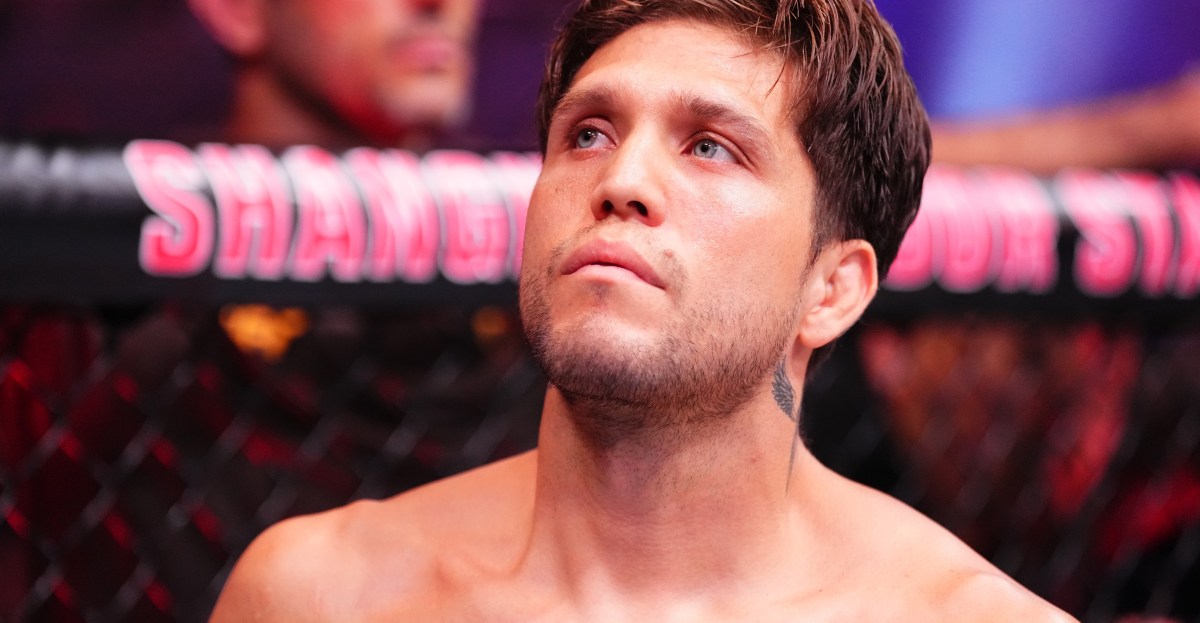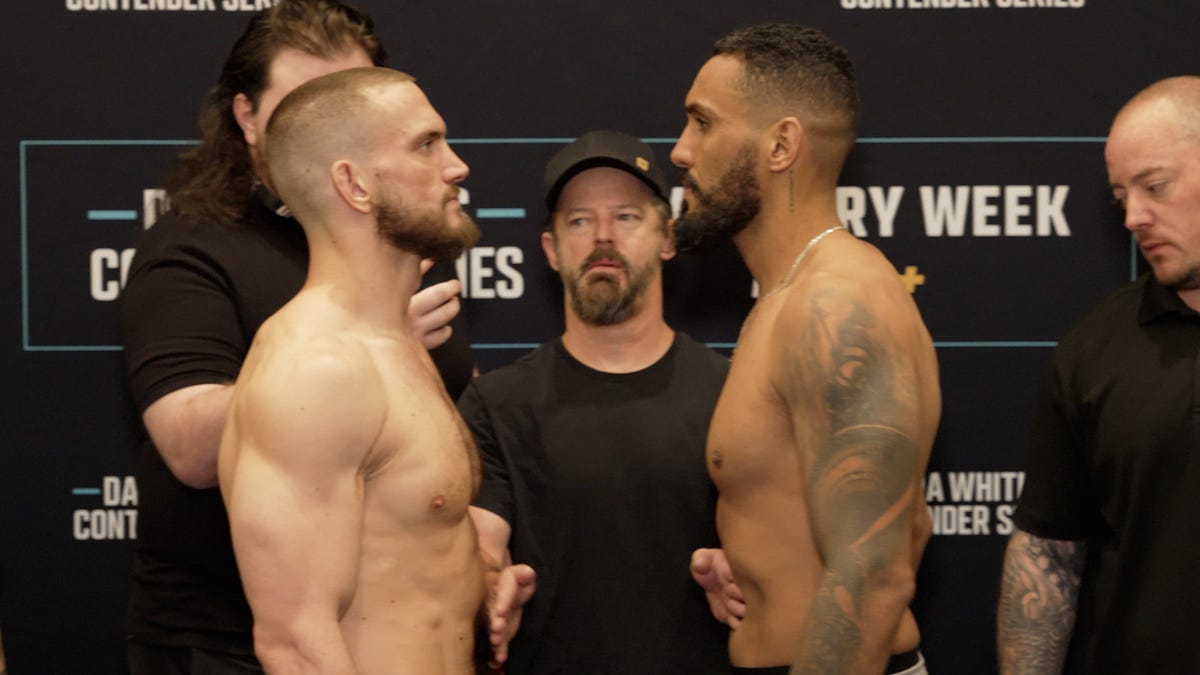The way it all started was that Dr. Luke Wood got an email from a prospective student. It’s not the kind of thing that happens all the time — most students who are considering attending Sacramento State University do not begin by reaching out directly to the president of the university — but this one caught his eye.
It was from a student in India named Aranjot Kaur. She’d applied and been accepted, she explained, and had learned while researching the school that Wood was an avid boxer. Seeing as how she was a martial artist herself, having represented India in the IMMAF Youth World Championships as a bantamweight, she hoped maybe they could train together if she ended up attending Sacramento State.
Advertisement
Advertisement
Advertisement
Advertisement
Wood, thinking to be helpful while also closing the deal and securing a new student, told her that the Sacramento State campus was just two blocks away from Ultimate Fitness, the MMA gym owned and operated by UFC Hall of Famer Urijah Faber.
“I told her, ‘It’s one of the best gyms in the world. You should check it out,’” Wood recalls. “She told me, ‘I know. That’s why I’m coming, so I can study at Sac State and train at Ultimate Fitness.’ That was the first time I realized there was something happening here.”
The more he talked to people about it, the more Wood realized what a draw the nearby gym was for students. Plenty of them, men and women, were taking university classes by day and learning jiu-jitsu or MMA or kickboxing at night. So Wood went straight to Faber, the former WEC champion and UFC fighter, with the broad outlines of an idea.
“I was like, ‘Man, we should do something special here,’” Wood says. “So we talked about different ways of structuring it, and we came up with Combat U.”
Advertisement
Advertisement
Advertisement
Advertisement
The idea was fairly simple. Students at Sacramento State could already take classes in physical pursuits ranging from dance to golf. Why not fight sports as well? And if students who excel at NCAA sports like football and basketball can earn college scholarships for their athletic achievements, why couldn’t it work the same for students who had dedicated their lives to the martial arts?
Left to right: Aranjot Kaur, student founder of Combat U, current Student Body President and Business Administration student; Miyuki Pugrad, graduate student and Combat U wrestler; Sabrina Cunha, wrestler and Kinesiology student; Ayahna Gonzales, boxer and Biomedical Science student. (Andrea Price, Sacramento State.)
An MMA program at an American university always sounded entirely reasonable to Aranjot Kaur. It was, in fact, one of the things she had in mind when she first reached out to Wood all the way from India.
Kaur’s love of MMA was such that, when she decided to apply to American universities, she first searched each one by proximity to a reputable nearby gym. Schools that met some of her requirements but would require her to drive 30 minutes or more to get her training in were cut from the list. Sacramento State had the best gym the closest to campus, so it was the clear winner. The problem was figuring out a way to pay for it all.
Advertisement
Advertisement
Advertisement
Advertisement
“International students pay like three times [the tuition] of domestic students,” Kaur says. “So I was thinking about how to pay for it … and I was applying to scholarships at Sac State. I was really disheartened when I saw nothing for martial arts, because I had credentials in it.”
She reached out to the Sacramento State athletic department and got nowhere. And as far as the NCAA was concerned, MMA might as well not exist. But in Wood, she found someone eager to listen and consider new ways of doing things.
“I remember I came to Sac State and my first day at the orientation I was sitting there and the president would give his fall address and his convocation,” Kaur says. “And then he comes down off the stage and he comes around and he stands next to me. He remembered me and he was like, ‘You’re the martial arts girl.’ So that’s how the conversation began. And right after that, I remember he didn’t take any time and there started being meetings about it. The president was on it. And the next semester was the official launch.”
Combat U was announced in early 2024, then began in earnest that fall. As Sacramento State begins the 2025-26 academic year this week, the program is officially one year old and now has more than 500 students enrolled. And just because the NCAA doesn’t recognize MMA, that didn’t stop Combat U from offering a few select scholarships with help from private donor funding.
Advertisement
Advertisement
Advertisement
Advertisement
One scholarship recipient is Traven “Baba” Wailehua. He grew up around fight sports in Hawaii, with his father taking him to boxing and MMA events. He even got to see Max Holloway fight as a teenager on the current BMF champ’s way up the ranks and into the UFC.
Initially, Wailehua pursued wrestling as a path to a college education. He spent his freshman year on the wrestling team at Wartburg College in Iowa, but it always felt like just a small piece of his ultimate goal, which was a career as an MMA fighter. So when Wailehua’s father brought a social media post about Combat U to his attention, he was immediately intrigued.
“Me and my dad reached out, and I would say less than three weeks later they got back to us and said, ‘We’re willing to give you this opportunity to come here to get an education as well as fight on a scholarship,’” Wailehua says. “Me and my dad were just like, ‘Wow this is actually a real thing?’”
Wailehua fought as an amateur at Combat U’s “Battle at the Hive” event (a play on the Sacramento State team name: the Hornets) this past March, winning via third-round TKO. It was an experience that he never thought he’d be able to have while still a college athlete, much less one that he ever expected to get through any university program.
Advertisement
Advertisement
Advertisement
Advertisement
“I always wanted to get my degree first,” Wailehua says. “Not just for myself, but for my family’s sake, always having a plan to be able to do something more, to be well-educated and well-rounded in everything. Now I can pursue a fighting career, but also a degree.”
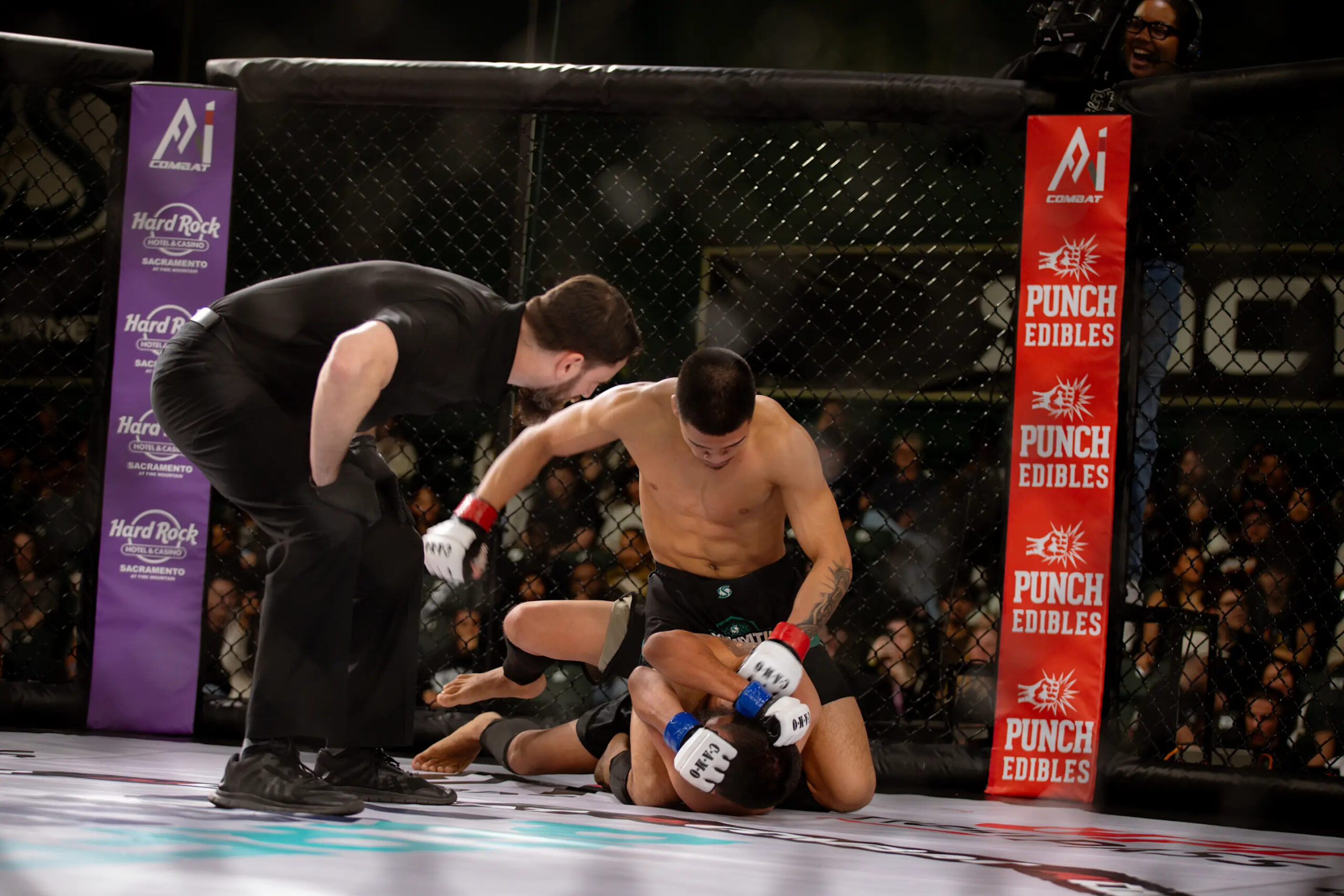
Traven “Baba” Wailehua was one of the inaugural scholarship recipients from Sacramento State’s new program. (Sacramento State, Bibiana Ortiz)
(Sacramento State/Bibiana Ortiz)
The NCAA has a long and complicated history with fight sports. While wrestling programs still thrive on some campuses, others have dropped their teams over the years. (One school to do so was BYU, which axed its wrestling team while a young Chael Sonnen was a student there. “I decided to transfer the next day,” Sonnen told me once. He ended up finishing his collegiate career at the University of Oregon, where he became an All-American.)
In the first half of the 20th century, many American universities had boxing teams. Harvard was particularly famous for some of the names who had shed blood on its canvases as undergrads, a list that includes Teddy Roosevelt, John F. Kennedy and Norman Mailer. But interest in college boxing was already declining when, in 1960, a boxer from the University of Wisconsin named Charlie Mohr died of injuries suffered in an NCAA boxing tournament.
Advertisement
Advertisement
Advertisement
Advertisement
Within a month, UW ended its boxing program. The NCAA followed suit by the end of the year, and that was essentially the end of collegiate boxing in America.
As the president of Sacramento State, Wood is aware that a college program promoting fight sports is bound to have its critics. First, there’s the health and safety argument. Boxing and MMA, these are hurting games, after all. Inflicting damage on your opponent is the whole point. It’s how you win.
Me and my dad reached out, and I would say less than three weeks later they got back to us and said, ‘We’re willing to give you this opportunity to come here to get an education as well as fight on a scholarship.’ Me and my dad were just like, ‘Wow this is actually a real thing?’
But, as Wood points out, colleges support many sports that injure their participants, whether that’s the stated goal or not.
“When we looked at our data and we looked at our highest risk sport, most people would say, ‘Oh, it’s got to be MMA.’ Nope. Then they would say, ‘Oh, it’s got to be football.’ Nope. Then, ‘Oh, well then it’s definitely rugby.’ Nope. Our highest risk for it is gymnastics,” Wood says. “We have more severe injuries that are career-ending in gymnastics on a regular basis than any other sport. But nobody would question people flying through the air and doing all the things that they do in gymnastics.”
Advertisement
Advertisement
Advertisement
Advertisement
Wood also insists that MMA’s risky nature is one of the reasons the university runs this program through the athletic department rather than as just another school club. That gives the students access to athletic trainers and other support staff. They conduct concussion baseline testing, and also connect students to physical therapists on campus. None of that can remove the risk of injury, Wood acknowledges, but he insists it’s no more dangerous than many other sports that college students regularly engage in.
“I also think that if you look at all the other things that we can be teaching, from the history of martial arts, the psychology of martial arts and combat sports, I think that there’s other things that directly tie to the academic learning environment,” Wood says. “I mean, it is a higher-risk sport. We know that. But it’s also coming with higher levels of support from us.”
This also has a personal component for Wood. He took up boxing relatively late in life, just prior to the start of the coronavirus pandemic. He’d gained weight and was looking for some way to get back in shape. His wife bought him a package of sessions with a boxing trainer. Before Wood knew it, he’d fallen in love with the sport.
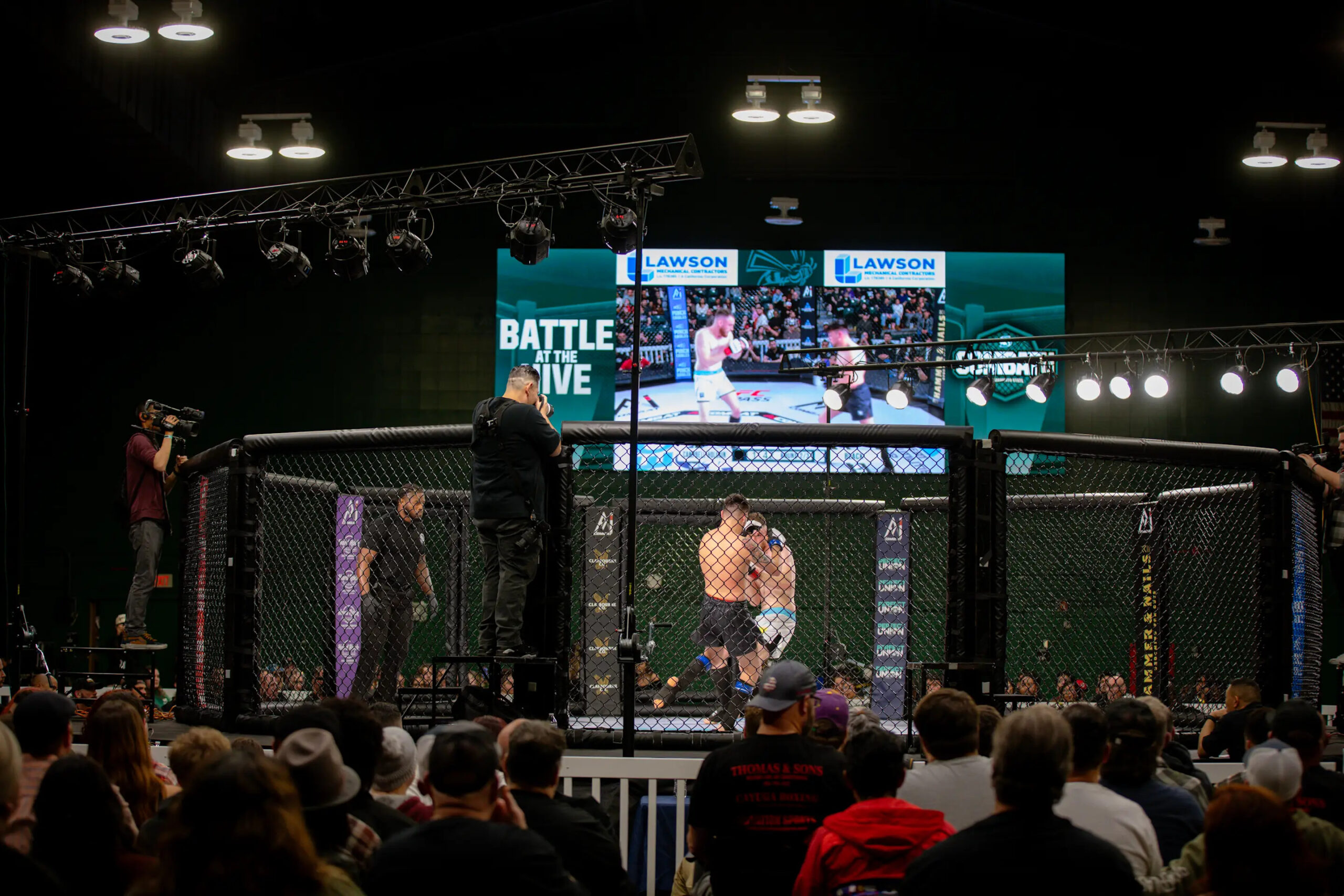
Sacramento State alumnus Daniel Black (white shorts) fights Joaquin Campbell-Holguin at the inaugural “Battle at the Hive” event. (Sacramento State, Bibiana Ortiz)
(Sacramento State/Bibiana Ortiz)
“The activity of it was so fun and enjoyable — and I’m losing weight,” Wood says. “I’d gone from about 260 [pounds] to about 220 [pounds] at that point. And then basically I’m in the gym working out and I see these guys in the middle of the ring and they’re sparring. I remember walking up to my coach and I was like, ‘Hey, I want to do that.’ And he told me, ‘We haven’t been training for that. We’ve been doing boxersize, brother.’”
Advertisement
Advertisement
Advertisement
Advertisement
So Wood started to get more serious about boxing. And when he heard about a local smoker event coming up, he told his wife he might like to sign up for a fight. She vetoed the idea, Wood says, and he acquiesced. But then on the night, he showed up as a spectator, just to support the other fighters as a friend and interested observer. They ended up putting him in the ring that night, and he won. As with all the bouts he’s had since then, he didn’t tell his wife it was happening until after it was over.
“Let’s just say that she was not super excited about it at first,” Wood says.
He’d spoken to Faber only a handful of times before the concept of Combat U started coming together. After Kaur’s inquiry had found him all the way from India, Wood began seriously considering how the university and Faber’s gym might work together — especially when he realized how many students and even faculty members were already training at Ultimate Fitness in one capacity or another.
“My job as a university president is to identify what it is that the students want and then to bring it to them,” Wood says. “Now, that’s a different philosophy. Not everyone has that philosophy. But Sac State is my alma mater. It’s where I went to school, so I want to make sure the students get every possible opportunity they can.”
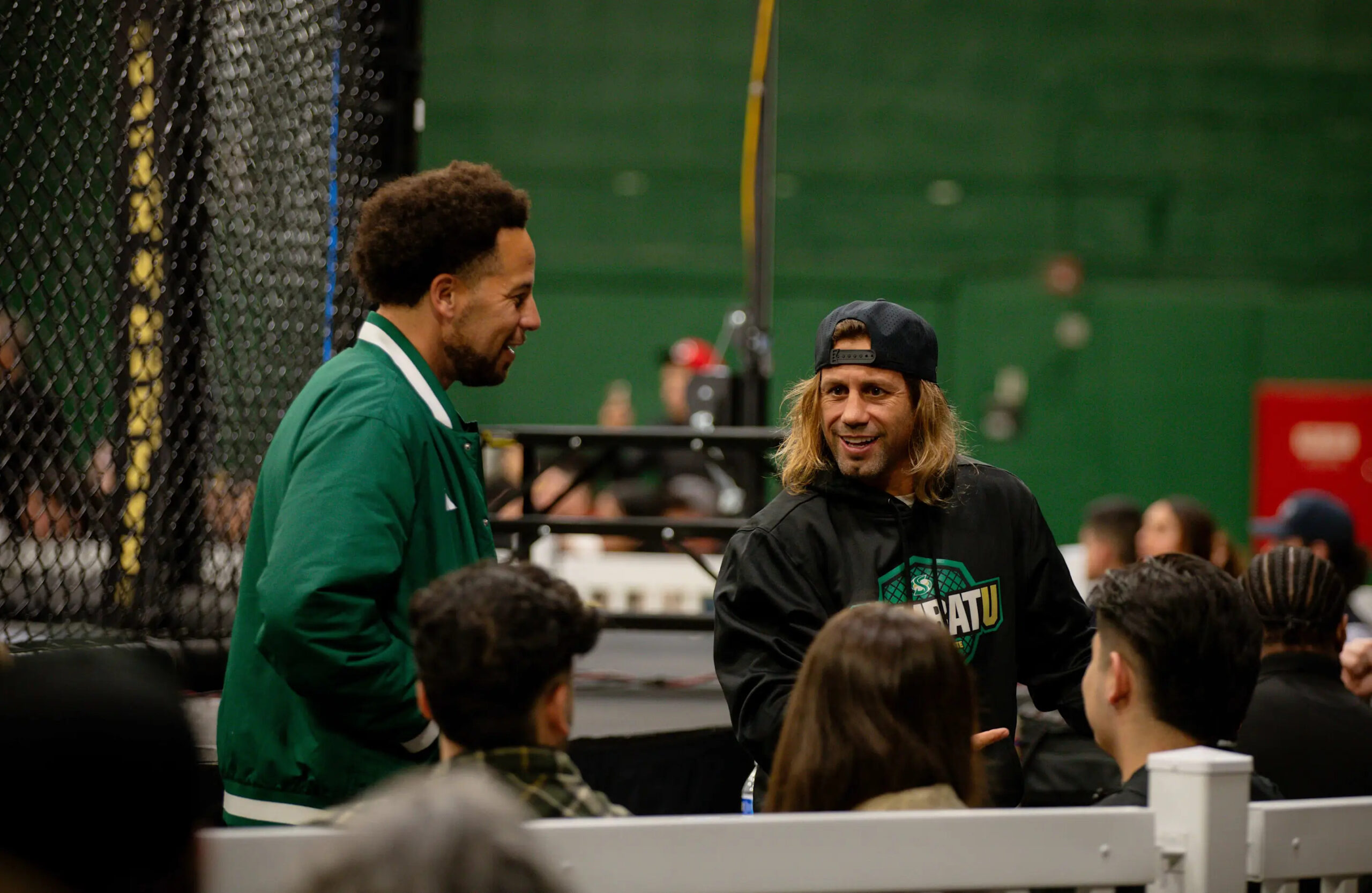
Dr. Luke Wood and Urijah Faber have worked in partnership to create a new collegiate athletic experience. (Sacramento State, Bibiana Ortiz)
(Sacramento State/Bibiana Ortiz)
Faber has been running his gym, as well as the Team Alpha Male fight squad that operates out of it, since 2006. Most of his members, he says, aren’t there to become professional fighters. They’re regular working people, maybe trying to get in shape or learn some self-defense, while also learning about themselves and what they’re capable of in the process.
Advertisement
Advertisement
Advertisement
Advertisement
So when Wood came to him with the idea for a college program, Faber replied that he’d long thought of his gym as a university for martial arts.
“The big thing was, Luke and I just decided that we are doers,” Faber says. “We talked about it. Then we started implementing it one month later, which is very difficult to do, especially in a place where you normally have to cut through all the red tape. We just said, ‘Let’s do it.’
“There’s a massive, massive hole in this area on collegiate sports. It’s because the sport’s still so new. It’s only 30 years old at the mainstream level, but also the oldest sport in the world, really, is fighting.”
As part of the program, students can take university classes in a number of different martial arts disciplines. Sacramento State students also get discounted access to Faber’s off-campus gym. Some, like “Baba” Wailehua, have also become regular members of Team Alpha Male.
Advertisement
Advertisement
Advertisement
Advertisement
Hector Fajardo, a Team Alpha Male fighter who serves as the director of Combat U, says it’s a model that could work in other places as well. Anywhere there’s a university with close proximity to an established fight gym, he says, the possibility exists. But it still requires a special sort of alchemy to make it work in practice rather than just theory.
“I think our environment is exceptional as a culture, but I think there are select locations that could provide their own program,” Fajardo says. “UNLV comes to mind as the next one, logically. But there are a variety of gyms that are around universities where this could be fostered and grown.
“But I think the biggest indicator is who’s running the university and who the president is,” Fajardo continues. “Luke Wood is one of one, in my opinion, just as a thinker and a president.
“I’ve been in contact with a lot of universities, a lot of clubs, a lot of student organizations have reached out to me to try to figure out how we do what we’ve done. And the number one thing to start it off is you’ve got to have a Luke Wood who’s willing to open the floodgates and give you the resources and to trust you to get it done.”
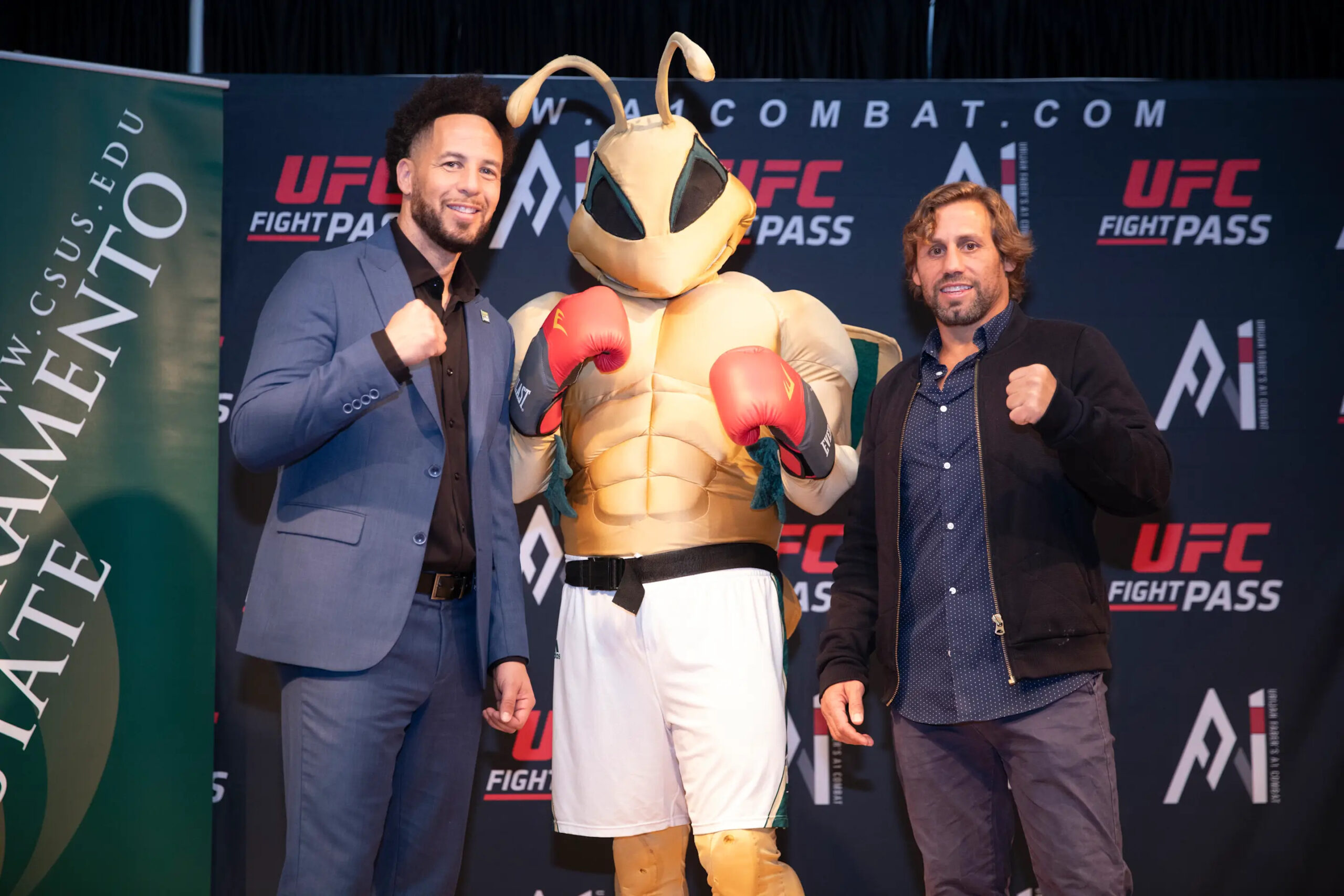
Dr. Luke Wood, Urijah Faber and the Sacramento State mascot pose at the introductory announcement for Combat U. (Sacramento State, Andrea Price)
For Kaur, the decision to follow her love of MMA all the way from India to Sacramento State has proven to be the right one. Not only has she found a home on the mats with teammates through Combat U, she also ran for student body president after a nudge from Wood — and won.
Advertisement
Advertisement
Advertisement
Advertisement
“I’m always passionate about giving back to what’s given me a platform to shine,” Kaur says.
“Elections were going on last year and President Wood was there. He was like, ‘Why don’t you run for this?’ I was so engrossed in Combat U, and really having leadership roles and training there, that I did not even think that, yes, there’s elections going on and I could do it. What I really wanted out of this position is to really advocate for students and tell them that you don’t have limits.”
Now in her junior year, Kaur plans to fight at the “Battle at the Hive 2” event on Sept. 6. She knows that seeing the student body president in a cage fight isn’t part of the typical college experience for most students, but then again being typical was never part of the goal.
“I’m excited to fight,” Kaur says. “And I hope that I get to fight and then I can say [to the other students] at the end, ‘I told you I would fight for you and fight for the Hive, both in and out of the cage.’ That’s the chance I’ve been waiting for.”

